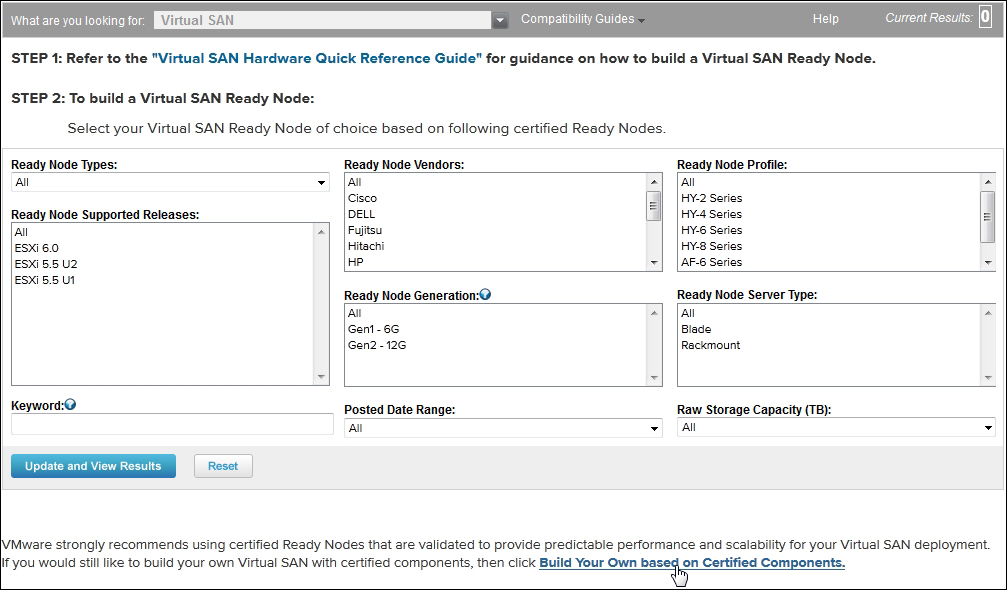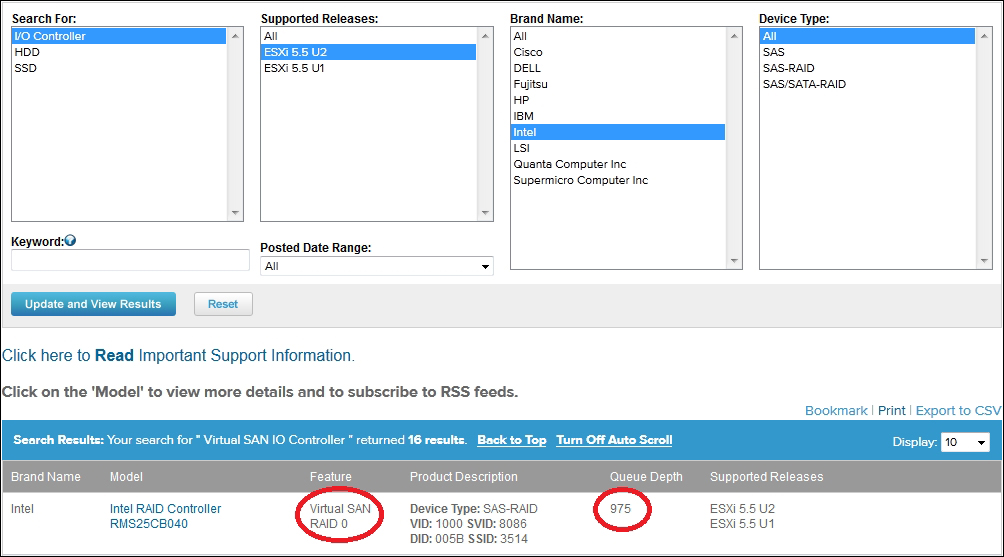Selecting an appropriate storage controller is one of the most important decisions you will make when creating a VSAN server configuration. The storage controller has tremendous weight in terms of I/O performance and reliability. Because of the importance of the storage controller on the overall performance and reliability of your VSAN cluster the storage controller must be selected from the VSAN-specific subset of the overall VMware Compatibility Guide.
The initial landing page for the VSAN Compatibility Guide will allow you to browse through VSAN Ready Node configurations. As we will be discussing the case of VSAN Ready Nodes later in this chapter, for now please click the "Build Your Own based on Certified Components" link from the main page of the VSAN Compatibility Guide:

Unlike the regular VMware Compatibility Guide, the VSAN-specific component guide is laid out as a branching tree that you can use to drill down to your desired configuration, after which time hardware choices will be displayed.
In the leftmost pane, select I/O Controller.
In the next pane, select the most-recent vSphere 5.5 or 6.0 update release.
In the next pane, select a brand name if desired.
In the next pane, specify whether you wish to view the SAS, SAS-RAID, or SAS/SATA RAID controller types.
Tip
Some controllers for VSAN support the pass-through (JBOD) mode, and some require you to create single-disk RAID-0 sets. Pass-through controllers tend to be easier to configure and make drive-replacement simpler. RAID-0 controllers are more common and typically have larger queue depths. When selecting controllers and disks, please keep in mind the performance and reliability differences between drive technologies. Generally speaking, SAS and Nearline SAS (NL-SAS) disks have deeper queue depths and are higher-performance. SAS disks are typically more reliable than their SATA and NL-SAS counterparts.
After making your selections, choose Update and View Results to get a list of hardware that matches your specifications.

Aside from simply ensuring that you select a supported storage controller, the VSAN-specific Compatibility Guide also provides you with additional detail that will be crucial to selecting your storage controller.
This view will tell you whether or not the controller supports the pass-through/JBOD mode and, vitally, it will tell you the controller's command queue depth. The controller's queue depth is a vital consideration. If each node is relatively small with one disk group, any queue depth above 256 commands is acceptable. If you have two disk groups, please consider 512 commands to be the minimum queue depth.
For large or high-performance configurations with several disk groups and extremely large capacities, and/or very high-performance SSDs, you should choose the highest queue depth you can. Standard controllers with maximum queue depths usually have around 1000 commands, like in the preceding example.
Queue depth can have a tremendous effect on the performance of streaming data. Opting for controllers and disks with deeper queues will provide better overall performance, particularly when VSAN is reconfiguring or resynchronizing data.



